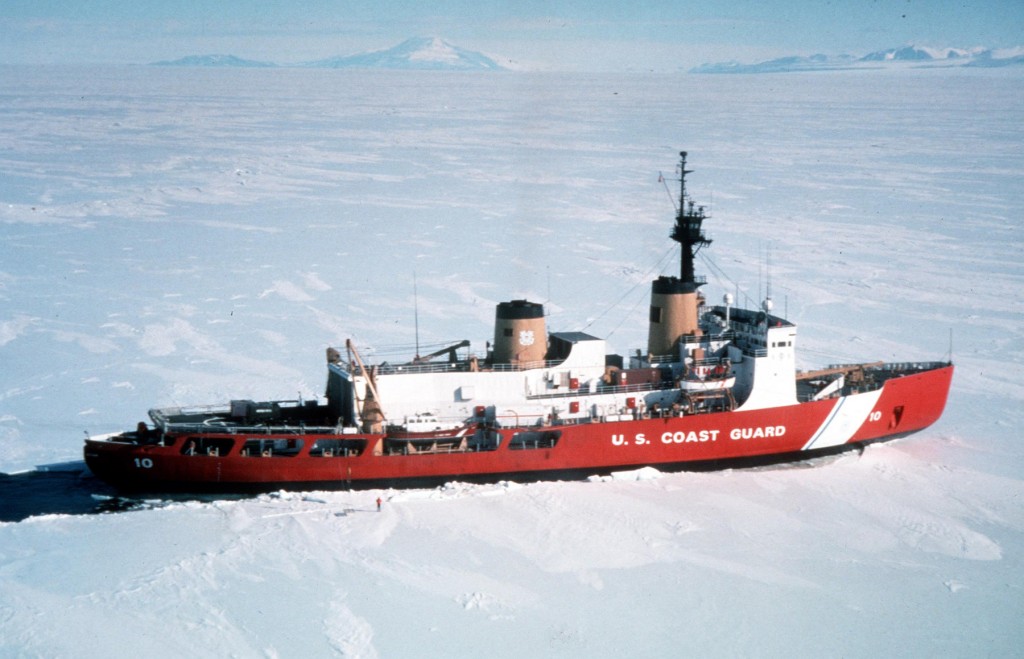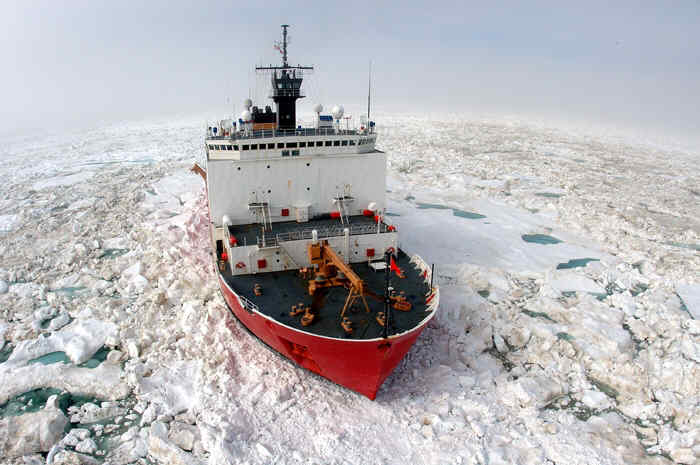
The Coast Guard intends to develop an acquisition strategy for its heavy endurance icebreaker program by the spring and reach production-related activities by 2020, after President Barack Obama announced in September that the United States should accelerate the icebreaker program to support increased activity in the Arctic.
Coast Guard acquisition chief Rear Adm. Mike Haycock said at an American Society of Naval Engineers chapter meeting that his office would begin “aggressive industry outreach” in January to help inform both the acquisition strategy and the physical requirements for the ship.
“Nothing is set in stone,” Haycock said.
“We’ve worked through the requirements piece of it, so we have our operational requirements document, which is getting close to being done.”
Haycock said the operational requirements document should be signed by Coast Guard leadership and then Department of Homeland Security leadership by January. That document will inform functional requirements and eventually the ship design, but until the Coast Guard talks to industry in the coming months, nothing is off the table for design or acquisition strategy.
“This industry engagement piece is too important for us to go prematurely necking down solutions,” he said.
“It’s a pretty heavy price tag, we’re looking at probably no less than $ 1 billion to build one of these things. We’re hoping that if we build at least two there’s enough interest from industry that this is worth their effort.”

The Coast Guard is in the midst of an analysis of alternatives and an affordability assessment. After those documents are completed and signed, and the Coast Guard acquisition community holds industry day events and one-on-one meetings with potential contractors, “our goal ultimately is to come up with a strategy that’s going to enable us to start production, production-related activities, by 2020, which is very aggressive.”
That aggressive schedule will be important if operations in the Arctic continue to increase as expected. Today, the Coast Guard has just one heavy endurance icebreaker and one medium endurance icebreaker to call upon: Coast Guard Cutters USCGC Polar Star (WAGB-10) and USCGC Healy (WAGB-20). A second heavy icebreaker, Polar Sea (WAGB-11), was placed in inactive status in 2011 and has been somewhat cannibalized to help supply Polar Star, since the ships are more than 35 years old and not all spare parts are still available.
“With one icebreaker down … we have one cutter that’s getting double duty,” Haycock said.
“It’s going to Antarctica every year. And so it used to be that you would go to Antarctica, do a dry dock availability, do a couple Arctic missions, do a dockside availability, and then you start the whole cycle over again every two years.”
That high operational tempo is taking its toll on Polar Star, he said. Dry dock periods are lasting longer than they ever have in the ship’s history, Haycock said, and “it can’t be sustained.” The ship was refitted in 2006 to extend its service life until 2020 to 2023, but Haycock said the ship needs help managing the icebreaking workload as soon as possible.
“There’s no backup, we have no redundancy,” he said.
Ultimately, the Coast Guard believes it needs five or six icebreakers, compared to today’s two: three medium and two or three heavy icebreakers. But Haycock warned that the Coast Guard wouldn’t be able to get to the medium endurance icebreakers for some time, despite the need.
The Coast Guard receives about $1 billion to $1.2 billion a year for recapitalization, “and the recapitalization need in the Coast Guard is far greater than that. We have aircraft that need to be recapitalized as well, and we’ve had to put that off. So that’s next in the hopper, in the 2020s timeframe we’re going to have to recapitalize … our aviation fleet. We have other cutters that are in dire need of recapitalization as well. Our inland fleet needs attention drastically as well. We know we need a medium duty icebreaker, and we know the importance of that fleet in the Great Lakes, but we can’t have it competing with the stuff we’re doing right this second.
“To be honest with you, the icebreakers – we can’t afford to recapitalize an icebreaker within our budget as it is,” he continued.
“Our acquisition budget is completely spoken for – our offshore patrol cutter is our top number-one priority from the commandant. When you start putting all the other programs that we’ve got going on with that, the billion, billion-two isn’t enough to do what we need.”
To help reduce cost, the Coast Guard signed agreements with Canada and Finland to leverage research they’ve already done into icebreaker design and capabilities. However, the United States has missions in both the Arctic and Antarctic, making its requirements somewhat unique. The ships will have to traverse open ocean for about 10,000 miles each way to reach the Antarctic for missions such as resupplying the McMurdo Station research center. And the environment in the Antarctic is harsher than in the Arctic, which will require greater capability from the ship.
Despite the challenges, Haycock said the U.S. needs to get this program going if it is to have a presence in the increasingly busy Arctic waterways. The Coast Guard’s annual “Major Icebreakers of the World” chart lists the U.S. as having five ships – the two operational icebreakers, plus the laid-up Polar Sea and two privately-owned ships with icebreaking capabilities. Russia, on the other hand, is listed as having 41, with five more under construction now and six more planned.
“A country that has a large interest in presence and a national security mission up in the Arctic would have a fleet that’s proportional to their interest,” Haycock said.
“You can see that’s true in Russia’s case; it is not so evident in our case.”





